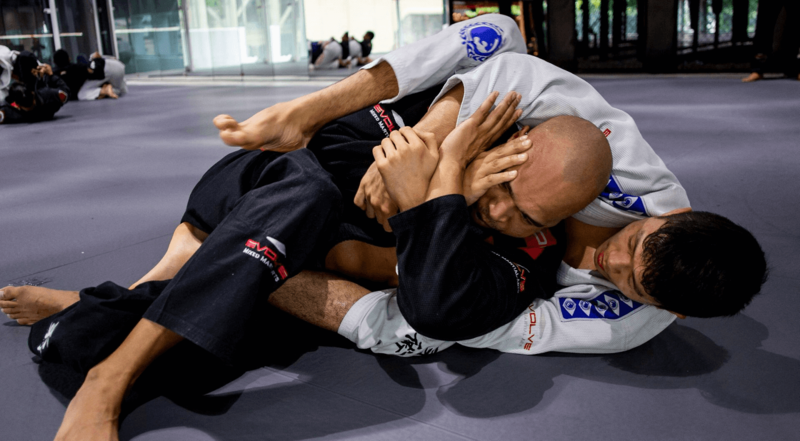
As someone who has been practicing Brazilian Jiu-Jitsu self-defense for several years, I can attest to its effectiveness.
Jiu-Jitsu is a martial art that focuses on grappling and ground fighting, making it an ideal choice for real-life combat situations where the fight will probably end up on the ground most fights do!
One of the key principles of Brazilian Jiu-Jitsu is that a smaller, weaker opponent can successfully defend themselves against a larger, stronger attacker by using leverage and technique.
This is why defensive BJJ is a popular choice for self-defense, especially for women and children who may not have the physical strength to overpower an attacker
.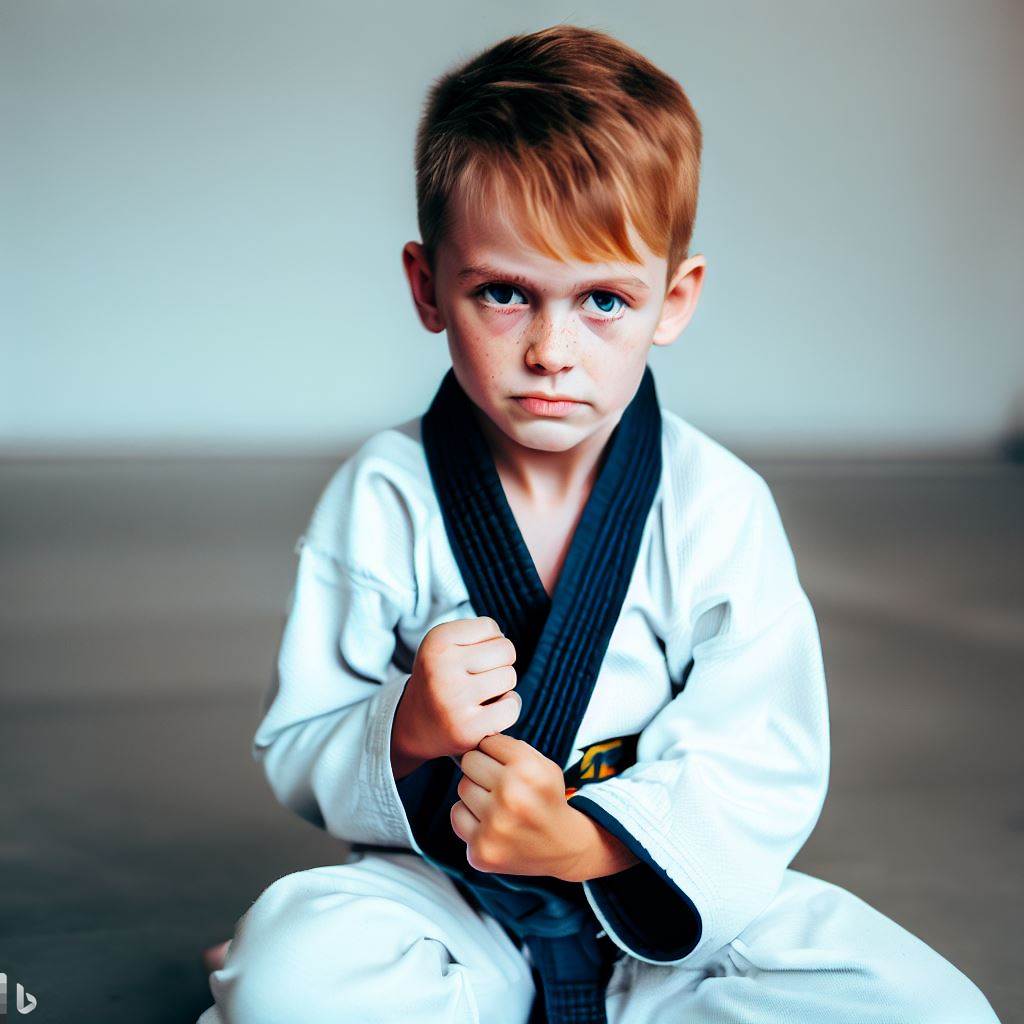
While Jiu-Jitsu is often associated with sports and competitions, its roots lie in self-defense.
Brazilian Jiu-Jitsu was developed by the Gracie family in Brazil as a way to defend themselves against larger, stronger attackers. Today, Jiu-Jitsu is recognized as one of the most effective forms of self-defense, with techniques that can be used to subdue an attacker without causing serious injury.
this is why law enforcement trains in defensive BJJ
Introduction to Jiu Jitsu Self Defense
Jiu Jitsu is a martial art that originated in Japan and has evolved into various styles.
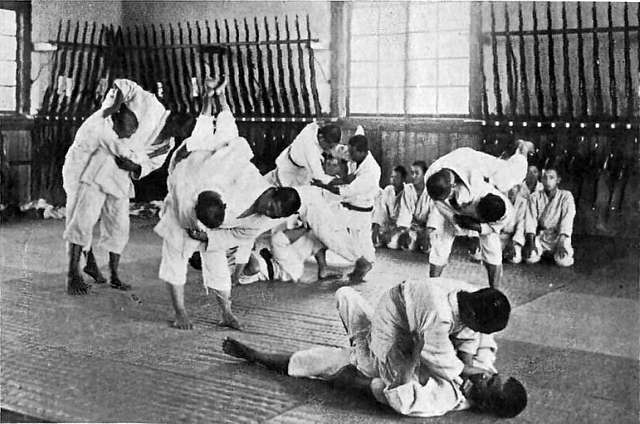
Brazilian Jiu Jitsu (BJJ) is one of the most popular styles of Jiu Jitsu in the world today. It is a grappling-based martial art that emphasizes technique and leverage over strength and size.
In recent years, BJJ has gained popularity as an effective self-defense system.
Unlike other martial arts that focus on striking techniques, BJJ emphasizes ground fighting and submission holds.
It is a practical self-defense system that is effective against larger and stronger opponents.

In today’s world, self-defense is more important than ever. With the rise of crime and violence, it is essential to have the skills and knowledge to protect yourself and your loved ones.
BJJ is an excellent way to develop these skills. Not only does it teach you how to defend yourself, but it also improves your physical fitness, mental toughness, and overall well-being.
In the following sections, I will discuss the key principles of BJJ self-defense, including techniques, strategies, and mindset. Whether you are a beginner or an experienced practitioner, this guide will provide you with valuable insights into the world of Jiu Jitsu self-defense.
The Key Principles of Jiu Jitsu
When it comes to jiu-jitsu self-defense, there are some key principles that every practitioner should keep in mind. These principles are designed to help you stay safe and protect yourself in a dangerous situation.
The first principle is leverage over brute force.
In jiu-jitsu, the technique is everything. It’s not about being the strongest or the biggest person in the room. Instead, it’s about using leverage and technique to overcome your opponent.
This is why jiu jitsu is such an effective self defense system. By using leverage and technique, you can overcome even the strongest attacker.
The second principle of BJJ
is the concept of positional dominance. In jiu jitsu, the person who has the most dominant position is usually the one who wins the fight.
This means that you need to focus on getting into a dominant position and maintaining it. By doing so, you can control your attacker and neutralize their ability to harm you.
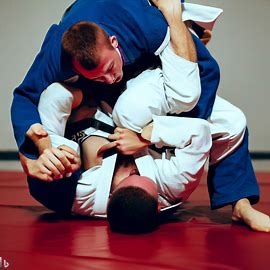
The third principle is the use of submissions to neutralize an attacker
Submissions are a key part of jiu jitsu . By using submissions, you can quickly and effectively neutralize an attacker without causing them serious harm. This is important because in a self defense situation, you want to protect yourself without causing unnecessary harm to your attacker.
Overall, jiu jitsu self defense is all about using leverage, technique, and strategy to protect yourself in a dangerous situation. By keeping these key principles in mind, you can stay safe and overcome even the toughest attackers.
8 Essential Items for Starting Jiu Jitsu Training
- Jiu Jitsu Gi: A durable, well-fitting gi (kimono) specifically designed for BJJ practice.
- No-Gi attire: Rashguard and grappling shorts or spats for no-gi training sessions.
- Mouthguard: To protect your teeth and gums from accidental impacts during sparring.
- Protective cup (optional for men): To safeguard sensitive areas during training.
- BJJ belt: A belt in the appropriate color for your current rank, which also helps secure your gi.
- Finger and/or athletic tape: To provide support and prevent injuries to fingers and other joints.
- Hygiene products: Antifungal soap, shower gel, or wipes to maintain cleanliness and prevent infections.
- Gym bag: A spacious bag to store and transport all your training gear.
Top Jiu Jitsu Techniques for Self Defense
Having trained in Jiu Jitsu specifically for self-defense, I can confidently vouch for the real-world effectiveness of this martial art in various situations.
Here are some of the top Jiu Jitsu techniques for self-defense that I have found to be the most useful
Standing Self-Defense Techniques
When it comes to standing self-defense techniques, one of the most important things to learn is how to defend against punches.
One effective technique is the TRITAC Frame 1, which involves covering your head and entering into grappling range to take control of your opponent.
Another useful technique is the double-leg takedown, which can be used to take down an opponent and gain control on the ground.
Ground Self-Defense Techniques
On the ground, Jiu Jitsu is especially effective for self-defense. One of the most important ground techniques to learn is the mount escape, which involves escaping from an opponent who has mounted you.
Another useful technique is the guard sweep, which can be used to sweep an opponent from the top position and gain control on the ground.
Escapes and Reversals
In addition to offensive techniques, it’s important to know how to defend yourself and escape from bad situations.
One useful escape technique is the rear naked choke escape, which can be used to escape from an opponent who has your back and is attempting to choke you.
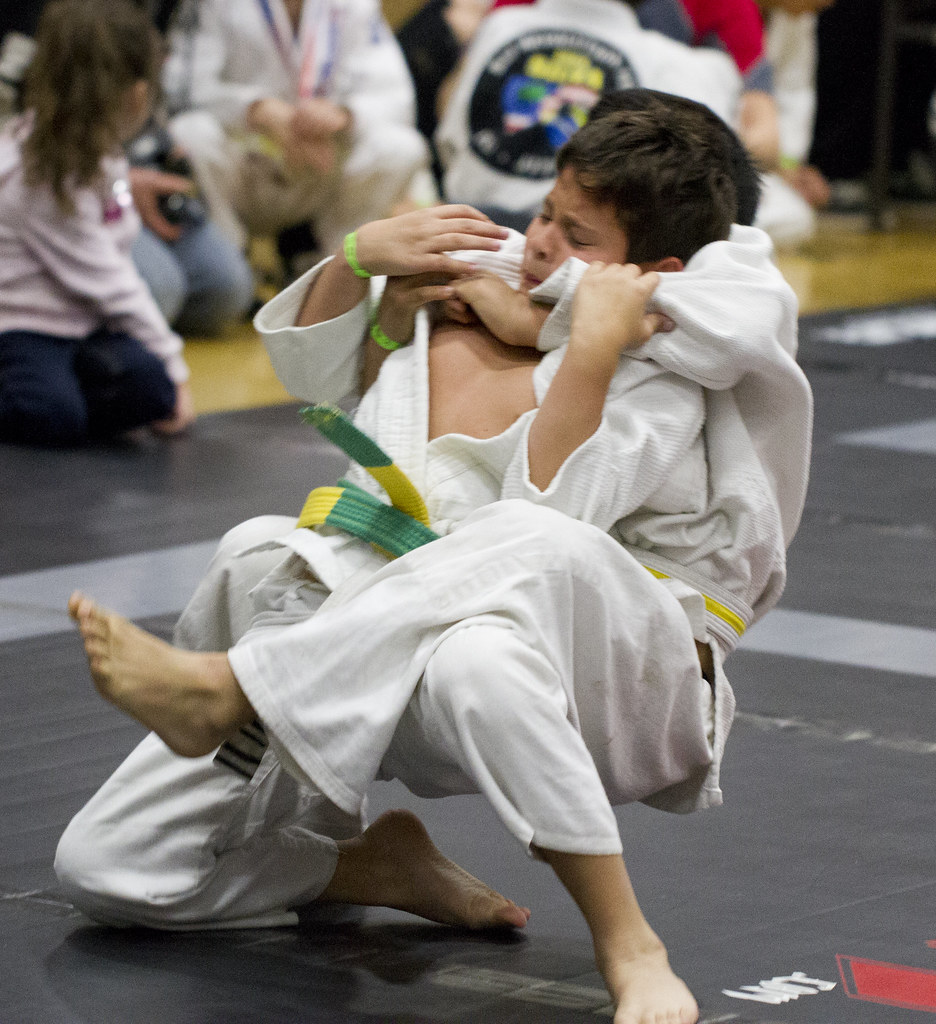
Another useful technique is the armbar reversal, which can be used to reverse an opponent who has attempted to armbar you.
Overall, these Jiu Jitsu techniques are just a few examples of the many effective self-defense techniques that can be learned through this martial art.
By training in Jiu Jitsu, you can gain the confidence and skills necessary to defend yourself in a variety of situations.
The Benefits of Learning Jiu Jitsu for Self Defense
Learning jiu jitsu for self defense can provide a variety of benefits that extend beyond just physical fitness. Here are some of the key benefits that I have experienced:
| PROS 🙂 | CONS 🙁 |
| 1. David vs Goliath 2. Full-body workout 3. Confidence boost 4. Mental chess 5. Pyjama party 6. conversation starter | 1. Laundry nightmare 2. The cauliflower ear 3. Mat burns 4. Sore muscles 5. Social life trade-off 6. Addiction warning |
Improved Confidence and Mental Resilience
One of the most significant benefits of learning jiu jitsu for self defense is the boost in confidence that it provides.
By learning how to defend yourself in a variety of situations, you’ll feel more capable and empowered in your daily life.
Additionally, jiu jitsu requires a great deal of mental resilience, as it can be physically and mentally challenging. This can translate to other areas of your life, helping you to stay calm and focused in high-pressure situations.
Enhanced Physical Fitness and Flexibility
Another benefit of learning jiu jitsu for self defense is the improvement in physical fitness and flexibility.
Jiu jitsu involves a great deal of grappling obviously, which can help to build strength, endurance, and cardiovascular fitness.
Additionally, the various techniques and movements involved in jiu jitsu can help to improve flexibility and range of motion.
Heightened Situational Awareness
Learning jiu jitsu for self defense can also help to improve your situational awareness.
By practicing self defense techniques, you’ll become more attuned to your surroundings and better able to assess potential threats. This can be especially valuable in situations where you need to quickly assess and respond to a potential danger.
Real-World Applications for Personal Safety
Finally, one of the most important benefits of learning jiu jitsu for self defense is the real-world applications for personal safety. Jiu jitsu is a highly effective martial art that can be used to defend yourself in a variety of situations, from physical altercations to potential sexual assaults. By learning these techniques, you’ll be better prepared to protect yourself and those around you.
How to Start Your Jiu Jitsu Self Defense Journey
Starting your Jiu Jitsu self-defense journey can be an exciting and rewarding experience. Here are some tips to help you get started:
Choosing the right Jiu Jitsu academy or school
When selecting a Jiu Jitsu academy or school, it is important to do your research. Look for a school that has a good reputation and a strong focus on self-defense.
Consider the location, class schedule, and cost. Many schools offer a free trial class, which is a great way to see if the school is a good fit for you.
Tips for selecting an instructor with self-defense focus
When selecting an instructor, look for someone who has experience in self-defense techniques. Consider the instructor’s teaching style and personality. You want someone who is patient, knowledgeable, and able to effectively communicate techniques.
It is also important to find an instructor who is willing to work with you to achieve your goals.
Establishing a training routine and setting goals
Establishing a training routine is key to making progress in Jiu Jitsu. Set a realistic schedule that works for you and stick to it. It is also important to set goals for yourself.
Whether it’s learning a specific technique or competing in a tournament, having goals can help keep you motivated and focused.
By choosing the right school and instructor, and establishing a training routine with clear goals, you can begin your Jiu Jitsu self-defense journey with confidence and excitement.
Women and Jiu Jitsu Self Defense
When it comes to self defense, Brazilian Jiu Jitsu is an effective martial art that can be learned by anyone regardless of their size or strength. This is especially true for women who may face unique challenges in self defense situations
.
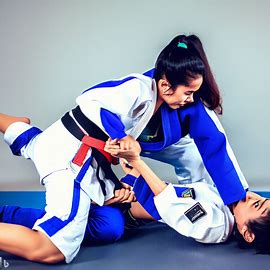
One of the reasons why Jiu Jitsu is so effective for women is that it relies on leverage and technique rather than brute strength.
This means that even a smaller person can successfully defend themselves against a larger and stronger attacker. In addition, Jiu Jitsu teaches you to stay calm under pressure and to use your opponent’s momentum against them.
Another benefit of Jiu Jitsu for women is that it provides a full-body workout that can improve your overall fitness and health.
Jiu Jitsu involves a lot of grappling and ground fighting, which can help you build strength, endurance, and flexibility.
Plus, it’s a fun and engaging way to stay active and meet new people. If you’re a woman who is interested in learning self-defense, I highly recommend giving Jiu Jitsu a try.
There are many schools and instructors that offer women-only classes or programs specifically designed for self-defense.
With consistent training and practice, you can develop the skills and confidence you need to protect yourself in any situation.
Frequently asked questions
Why is BJJ so difficult?
BJJ can be challenging due to its demanding physical and mental stamina, steep learning curve, and constantly evolving techniques. Building endurance, mastering numerous techniques, and staying updated with new developments require time and dedication.
Is Krav Maga better than jiu jitsu?
It depends on the situation. Krav Maga focuses on practical, effective strikes and escapes, while Jiu-Jitsu emphasizes ground fighting and grappling. Both can be effective in different scenarios, so a well-rounded skill set from multiple disciplines is ideal for self-defense.
What is defense or offense BJJ?
Defense or offense BJJ refers to whether a practitioner is using Brazilian Jiu Jitsu techniques to protect themselves from attacks (defense) or actively seeking to control or submit their opponent (offense).
What should a white belt BJJ know?
A white belt should know basic techniques, positions, and submissions, as well as proper etiquette
What is BJJ’s weakness?
BJJ’s weakness can be its limited focus on striking and stand-up fighting.
Is it allowed to punch in BJJ?
Punching is not allowed in traditional BJJ competitions or training
How long does it take to learn BJJ for self-defense?
Learning BJJ for self-defense may take a few months to a year, depending on the individual.
Is 35 too late to start BJJ?
No, 35 is not too late to start BJJ, as Brazilian Jiu Jitsu can be practiced by people of various ages and offers physical, mental, and social benefits regardless of when you begin.
Can you get a black belt in BJJ in 6 years?
It’s possible but rare to get a black belt in BJJ in 6 years, as it typically takes longer.
How often should a beginner train for BJJ?
A beginner should train BJJ 2-3 times a week for optimal progress without burnout.
